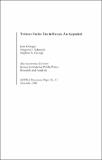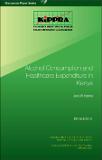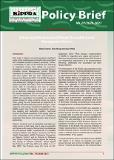| dc.description.abstract | Excise taxes form a substantial proportion of revenue for governments all over
the world, and especially in low-income developing countries. Excise taxes are
levied on a few goods characterised by low price elasticity of demand; there is
minimal cutback in consumption of the good as price increases. Excise on tobacco
falls under the category of sin taxes—taxes that are meant to discourage
behaviour associated with inefficient decision-making. Using OLS, we determine
both the long-run and short-run price elasticity for cigarettes which we then
use to determine the tax rate that would maximise tax revenue for the
government. The empirical results show that long-run responses are high,
ranging between -1.78 for all cigarettes to -1.36 for filter cigarettes. Using the
elasticity for all cigarettes, we find that the tax rate that would maximise tax
revenue should be at 128%. This is fairly close to the current rate of 130% but
the revenue maximising tax rate combines both excise tax and VAT. We conclude
that in general, the price elasticity is not as low as authorities may have assumed.
In the short run, the elasticity is low yet tax policy cannot be based on short-run
responses but rather on long-run structural movements. Since tobacco
excise tax is a sin tax, there is justification to impose high taxes, despite the
high elasticity, to deter consumption. However, if set too high there will be
evasion and smuggling, therefore defeating the revenue maximising goal. There
is also a danger of substitution to more harmful substances. | en |




